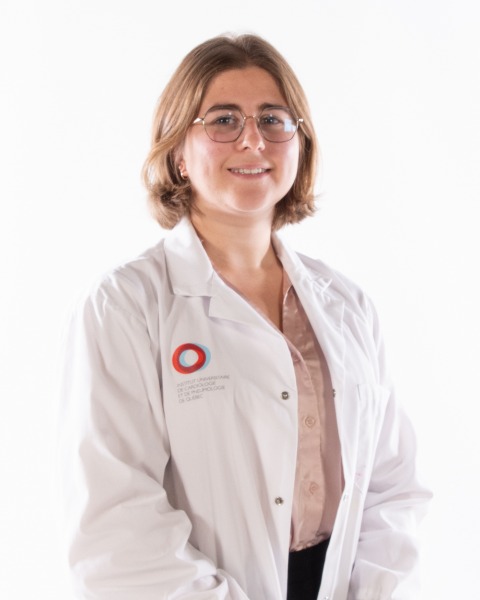Research
POSTER SESSION #3
P338 - QUIESCENCE STUDY OF VALVULAR INTERSTITIAL CELLS ISOLATED FROM HUMAN STENOSED AORTIC VALVE
Saturday, October 25, 2025
12:30pm - 1:30pm ET
Location: Board 74

Chloé Marqueze-Pouey (she/her/hers)
MSc
Laval University
Québec, Quebec, Canada
Presenting Author(s)
Background: Valvular interstitial cells (VICs) are a dynamic cell population of which the phenotype is modified in pathological conditions such as aortic stenosis. VICs which are initially quiescent are activated to induce extracellular matrix remodeling of the valve, then they become osteoblast-like cells and initiate the formation of calcification. The variability of the disease’s stage between patients make difficult to study those VICs from stenosed aortic valves, and it is primordial to standardize VICs profile prior study. The aim of this study is to describe aortic VICs phenotypes on different passages in cell culture.
METHODS AND RESULTS: VICs isolated from human stenosed aortic valves (8 males and 7 females) were cultivated from P0 to P6 (Table 1). The expression of markers of activation (α-SMA, SM22), fibrosis (COL1A1, COL3A1) and calcification (RUNX2, ALPL), known as specific markers of VICs phenotypes, was evaluated by western blot and RT-qPCR. The morphology was analyzed with immunofluorescence (Vimentin).
We observed a decrease in the VICs’ activation with an increase in the number of passages. Collagen I and III expressions were decreased at advanced passages, reaching values below the P0 ones. α-SMA’s expression was at the lowest at P4, reaching the level of P0 values. ALPL’s expression was significantly decreased at P4 to P6 compared to P0. Regarding the morphology, VICs were more elongated at P3 than in P0, with a stagnation at P4 to P6. We did not find sex-differences in the cinetic of VICs activation.
Conclusion: Even though VICs were not fully quiescent at P4, it seems the one to favor studying VICs because they were the less activated. The choice of this stage also allows for the collection of a large number of cells, enabling their future study. These results provide a foundation for future projects aimed at better understanding the pathophysiology of aortic stenosis, using human stenotic aortic valves, which are more accessible than healthy ones.
METHODS AND RESULTS: VICs isolated from human stenosed aortic valves (8 males and 7 females) were cultivated from P0 to P6 (Table 1). The expression of markers of activation (α-SMA, SM22), fibrosis (COL1A1, COL3A1) and calcification (RUNX2, ALPL), known as specific markers of VICs phenotypes, was evaluated by western blot and RT-qPCR. The morphology was analyzed with immunofluorescence (Vimentin).
We observed a decrease in the VICs’ activation with an increase in the number of passages. Collagen I and III expressions were decreased at advanced passages, reaching values below the P0 ones. α-SMA’s expression was at the lowest at P4, reaching the level of P0 values. ALPL’s expression was significantly decreased at P4 to P6 compared to P0. Regarding the morphology, VICs were more elongated at P3 than in P0, with a stagnation at P4 to P6. We did not find sex-differences in the cinetic of VICs activation.
Conclusion: Even though VICs were not fully quiescent at P4, it seems the one to favor studying VICs because they were the less activated. The choice of this stage also allows for the collection of a large number of cells, enabling their future study. These results provide a foundation for future projects aimed at better understanding the pathophysiology of aortic stenosis, using human stenotic aortic valves, which are more accessible than healthy ones.
